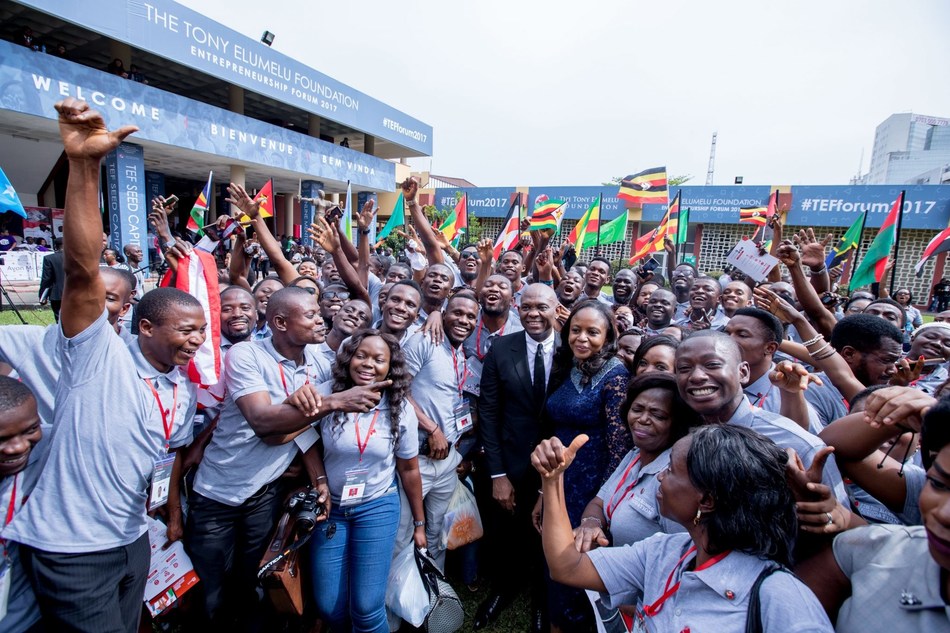By Ogechi Onuoha, Associate Olajide Oyewole LLP DLA Piper Africa member firm in Nigeria
Limited access to electric power and endemic electricity shortages are hindering the socio-economic development of West African countries, which are dependent on expensive fossil fuels. Nigeria and Mali have initiated and implemented some remarkable reforms in their power sectors in recent years that illustrate the developmental trends in the region’s power sector. In 2017, the total installed capacity in West Africa was 18 GW,1 excluding
Nigeria. Electricity trading in West Africa accounts for only 5% of the gross demand, while countries like Togo, Benin and Niger are largely dependent on imports to meet demand.
Nigeria is endowed with large quantities of high-quality energy sources, including natural gas deposits, oil, hydro and solar. The country has the potential to generate 12,533 MW of electric power from its existing plants, but is currently only able to generate 4,000 MW, which is insufficient for its power needs.2 Although Mali has a high potential for solar, hydro and bagasse-based power generation, the country only has about 310 MW of on-grid installed generation capacity to serve its population of almost 18 million people.3 Mali imports another 27 MW and has approximately 70 MW of off-grid production.
Innovations and recent developments
In addressing the challenges evident in Nigeria’s power sector and relating infrastructure, liquidity and governance, the government of Nigeria in 2001 launched a set of power reforms in the country which subsequently led to the
unbundling and privatization of electricity generation and distribution companies. Prior to the privatization of the power sector, the National Electric Power Authority (NEPA) was the government regulatory body solely responsible for the generation, transmission and distribution of electricity in Nigeria. NEPA was, however,
characterized by infrastructural decay, lack of sustained investment, inadequate funding, government monopoly, corruption and an under-skilled workforce.
The government of Nigeria then inaugurated the Electric Power Implementation Committee (EPIC), which drafted the National Electric Power Policy (NEPP) in 2001 and, in turn, led to the enactment of the Electric Power Sector Reform Act (ESPR Act) in 2005. As part of the ESPR Act, the Nigerian Electricity Regulatory Commission (NERC)
was established as an independent electricity regulatory body while the Power Holding Company of Nigeria (PHCN) was incorporated as the initial transitional holding company of the 18 successor companies (including 6 generation
companies, 11 distribution companies and 1 transmission company) created from the defunct NEPA.
Subsequently, between November 2013 and November 2014, the privatization of all the generation and distribution companies was successfully completed while the government retained ownership of the transmission company. The reforms were designed to be implemented through four stages of development, including:
- The interim period, which began in November 2013 and involved the allocation of sector cash deficits across all market participants before expected tariff reviews;
- The Transitional Electricity Market (TEM), when the Nigerian Bulk Electricity Trading (NBET) actively traded bulk power – as a buyer from generation companies (GenCos)/Independent Power Producers (IPPs) and resellers to distribution companies (DisCos);
- The medium-term electricity market, which involved the cessation of NBET and the novation of contracts between NBET and GenCos/IPPs to DisCos. At this stage, the DisCos will commence direct purchase of power from the GenCos/IPPs for onward sale to the consumers; and
- The final market, with bilateral contracts between electricity buyers and sellers at all levels, and a central balancing mechanism through the creation of a spot electricity market.
Although the TEM was effectively declared by NERC in 2015, the reforms have not gone beyond the interim period because some predetermined requisites for the TEM stage have not been met.
In 2017, the Nigerian government further initiated the Nigerian Power Sector Recovery Program (PSRP) to be implemented between 2017 and 2021. The PSRP, which was developed with the support of the World Bank, consists of a series of policies on the regulatory, operational, governance and financial interventions to be implemented by the Nigerian government over the identified period. The aim of the PSRP is to:
- Accelerate a recovery path for Nigeria’s power sector by improving the financial capacity of the NBET;
- Improve the viability of distribution companies; strengthening the sector’s institutional framework;
- Implement clear policies that promote and encourage investor confidence in the sector; and
- Establish a contract-based electricity market or TEM which will ensure that electricity trading is done through contracts entered into between participants in the electricity market value chain.
Since 1998, the government of Mali has implemented a series of reforms through a host of legislative and statutory instruments formulated to redefine the role of the government in the energy sector and open it up
to the private sector. Some of the key policies relating to the power sector include:
- The Stratégie Nationale pour le Développement des Energies Renouvelables was adopted in 2006 and aimed at promoting the widespread use of renewable energy technologies and equipment in order to increase the hare of renewable energy in national electricity generation up to 10% by 2015; developing the biofuel subsector for various uses including electricity generation; and searching for sustainable and suitable financing mechanisms for renewable energy.
- The Lettre de Politique Sectorielle de l’Énergie was initiated for the period between 2009 and 2012 with the goal of completing the restructuring of Énergie du Mali SA (EDM) and tariff reforms and taking steps to ensure that there is a wide access to rural electricity, at affordable cost.
- The Programme d’Urgences Sociales d’Accès à l’Énergie was developed as an emergency program by the EDM for implementation from 2017- 2021. The main objective of the program is to improve the quality of electricity supply and, subsequently, to create wider access to electricity in both urban and rural areas.
The emergency program includes the following activities:
- Rehabilitation of existing power plants;
- Rehabilitation and upgrade of existing transmission and distribution systems;
- Improvement of billing and revenue collection; and
- Increasing the capacity of the existing interconnections with Côte d’Ivoire, Senegal and Mauritania.
The following successes have been recorded since the implementation of the emergency program:
- USD56 million revenue collected from overdue electricity bills issued before January 1, 2017, representing 58% of overdue bills;
- A collection rate of 72% for bills issued after January 1, 2017, an 18% increase from 2016;
- The securitization of illegal connections generating about USD12 million; and
- The EDM has signed a contract for the rehabilitation of the Darsalam power plant (33 MW) and is currently negotiating to rehabilitate the generation units of the Sirakoro power plant (56 MW).
The government of Mali is also creating an enabling environment for private investors in the energy sector through several mechanisms such as the Fonds d’Électrification Rurale, established in May 2005 and managed by the Agence Malienne pour le Développement de l’Énergie Domestique et de l’Électrification Rurale (AMADER),
which has the objective of providing funds for studies, strengthening the management capabilities of private operators and providing co-financing for rural electrification investments.
Challenges in the implementation of reforms
The implementation of these reforms has not been without challenges. Despite the establishment of the Multi-Year Tariff Order (MTYO) in 2015, as a tariff model for an incentive-based regulation of electricity prices from time to time over a 15-year period, the end user tariff has not been cost reflective. The MYTO was established as part
of the drive for privatization and to ensure that prices charged by licensees are fair to customers and sufficient to allow the licensees to finance their activities and to allow for reasonable earnings for efficient operation.
The lack of cost-reflective tariffs has led to a huge sector cash deficit, which does not provide any investment incentive to private sector owners. This situation is further worsened by the inability of the NERC to implement reviews in order to alleviate the volumetric risks associated with the MYTO generation assumptions. The lack of cost-reflective tariffs has also adversely affected the performance ratio of DisCos in recent years. There has also been a lack of effective governance and enforcement of rules and policies in Nigeria’s power sector, which
has led to a mismanagement of funds, poor revenue generation and inefficient collection.
Nigeria’s power sector is faced with a lack of proper funding and dwindling income, which may be due to the collapse of global oil prices. The sector is also facing myriad structural problems that continue to hamper growth such as a shortage of gas supply for thermal plants, a high level of unpaid electricity bills and the country’s outdated and poorly maintained transmission network, which the government still owns but has put under private management. Also, the existing transmission network cannot handle more load than current peak electricity production. Furthermore, many of the new power operators have struggled to make progress, especially as they have had to contend with aging facilities requiring substantial investment to upgrade and expand.
Mali’s power sector has experienced poor management of its state-owned electricity utilities, relying on subsidies from government and multinational banks. The sector has huge financing needs and requires strong partnerships with investors, mostly from the private sector, in order to meet these needs. In addition to the investments needed for power generation, the transmission and distribution segments of the power sector will require approximately USD1.4 billion by 2034 and an average of USD27 million per year of investments, respectively.
Prospects and opportunities for growth
West Africa will continue to be an attractive investment destination given its abundant natural resources for power. The power and energy sector is a critical driver for growth and development across the continent and it is important that the sector reaches its full potential and addresses the energy needs of its consumers. West Africa is highly dependent on fossil fuel powered plants, which – besides the environmental implications – create a problem for supply and price variability.
There is an increasing need for the region to focus on low-fuel, low-carbon power systems for electricity generation which will help to alleviate the problem of access to energy, especially in rural areas of the region where the cost of transporting electricity from large-scale power plants is high. The International Renewable Energy Agency (IRENA)13 predicts that renewables, including hydro, will account for more than 50% of the
power generation share by 2030 in West Africa, rising from the current level of 22%. Across the region, renewable technologies are a path to diversification of energy sources.
Hydropower is a significant source in Côte d’Ivoire, Guinea-Bissau, Liberia, Nigeria, Sierra Leone and Ghana. Solar PV, wind and biomass-based electricity generation remain a small part of the overall regional electricity generation mix in some countries. The three technologies together account for more than 90% of domestically produced, grid-connected electricity in Burkina Faso, Togo and Benin and more than 60% in Gambia, Guinea-Bissau and Senegal. By 2030, West Africa could benefit from importing more than 30 TWh of hydroelectricity via DRC and Cameroon, but Guinea also has the potential to become an electricity exporter by sending more than 4 TWh of electricity to neighboring countries such as Guinea-Bissau, Mali, Senegal, Sierra Leone, as well as to Côte d’Ivoire through Liberia.
Côte d’Ivoire would in turn, export to Mali, Burkina Faso and Ghana. In order to tap into the immense potential for growth in the power sector of West Africa, governments of the region need to design power policies which will address:
- The maintenance of existing power infrastructure;
- The periodic institutional reform of utilities and service providers; and
- Improved subsidy policies and practices that could help save a substantial percentage of the annual cost required to fill infrastructural gaps.
Investment in off-grid renewable energy presents an attractive option for investors in countries where most of the population either have no access to the grid or are unable to afford a connection to the grid. Off-grid solar energy can provide access to lighting and, in some cases, mini renewable-based electricity generators. Furthermore, in order to encourage local sourcing and consequently reduce cost, West African countries can venture into the production of manufacturing materials and components required for power generation plants and distribution lines.
More indigenous companies should also be encouraged to venture into the construction, operation and maintenance stream for power projects. The role of the private sector in addressing the region’s power deficit
is crucial. In view of the increasing electricity demand and lack of adequate financial resources, more public-private partnerships (PPPs) should be encouraged in order to address the power deficit situations in the respective countries of the region. However, to achieve the level of investment required in the sector, there is a need to improve the investment conditions for electricity access-related projects.
This can be achieved by providing more clarity on the investment framework, ensuring market transparency
and encouraging consultations over the pace of grid extension in West Africa. Closer cooperation and linkages should also be built between investment promotion agencies in the region in order to enhance access to information on investment opportunities.
Conclusion
The World Bank estimates that integrated power trade in West Africa could lead to cost savings of between USD5 billion to USD8 billion per year by enabling countries to import cheaper sources of electricity and increase access to affordable, reliable and modern energy. The integration of electricity grids is expected to create more sustainable sources for power generation by replacing baseload oil-fired power generation with renewable sources. The integration is also expected to ensure that there are fewer energy shortages and that the West African market becomes more attractive to private sector investment in power generation.
A well-functioning power market requires the right infrastructure as well as strong collaborations among the key players at all levels in the sector. For the regional power market to achieve its full potential, there must be improvement in the creditworthiness of the sector, contracts must be strengthened and guarantees provided, in order to boost investor confidence in the market.
Source: DLA Piper Africa Connected Issue 3: Energy in Africa – Innovation, Investment and Risk






